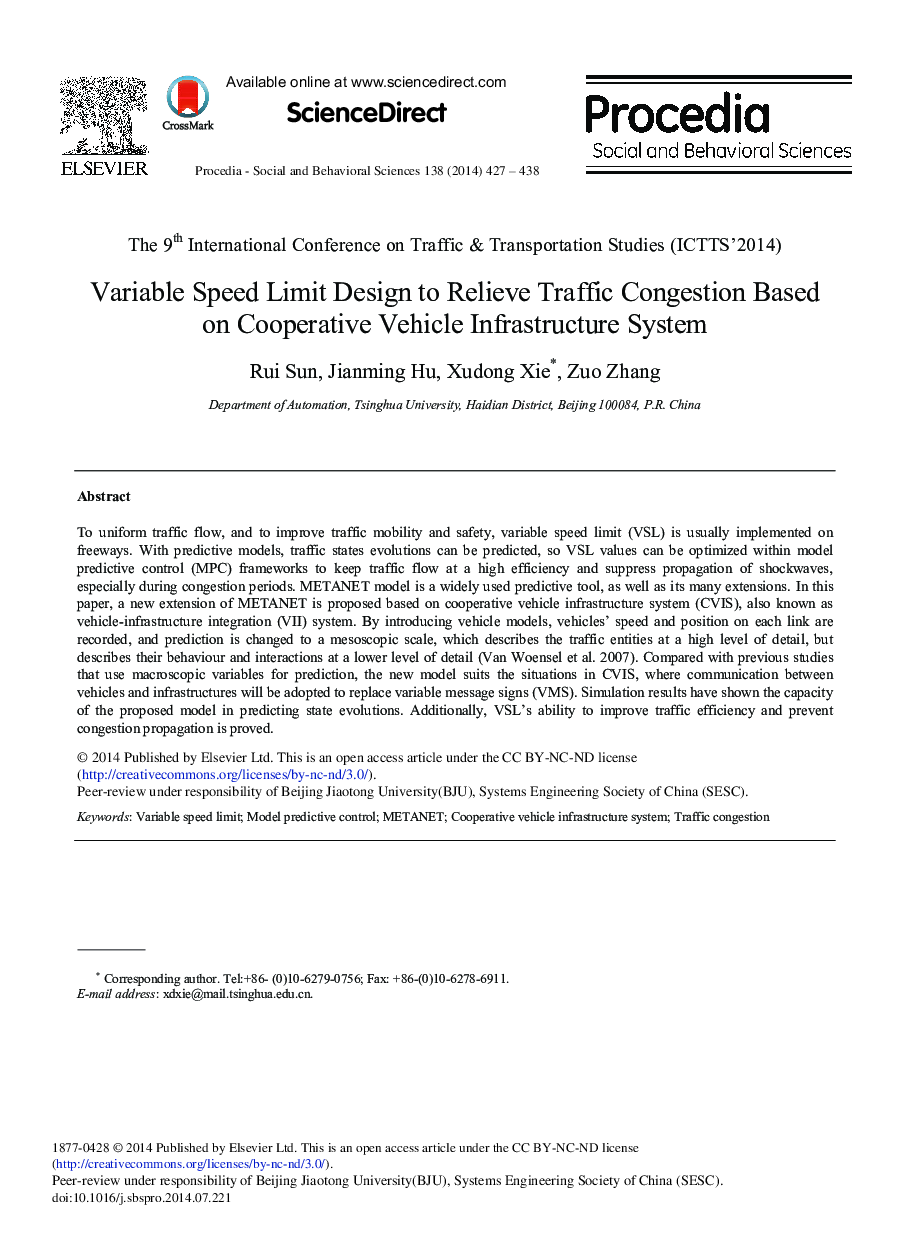| Article ID | Journal | Published Year | Pages | File Type |
|---|---|---|---|---|
| 1114239 | Procedia - Social and Behavioral Sciences | 2014 | 12 Pages |
To uniform traffic flow, and to improve traffic mobility and safety, variable speed limit (VSL) is usually implemented on freeways. With predictive models, traffic states evolutions can be predicted, so VSL values can be optimized within model predictive control (MPC) frameworks to keep traffic flow at a high efficiency and suppress propagation of shockwaves, especially during congestion periods. METANET model is a widely used predictive tool, as well as its many extensions. In this paper, a new extension of METANET is proposed based on cooperative vehicle infrastructure system (CVIS), also known as vehicle-infrastructure integration (VII) system. By introducing vehicle models, vehicles’ speed and position on each link are recorded, and prediction is changed to a mesoscopic scale, which describes the traffic entities at a high level of detail, but describes their behaviour and interactions at a lower level of detail (Van Woensel et al., 2007). Compared with previous studies that use macroscopic variables for prediction, the new model suits the situations in CVIS, where communication between vehicles and infrastructures will be adopted to replace variable message signs (VMS). Simulation results have shown the capacity of the proposed model in predicting state evolutions. Additionally, VSL's ability to improve traffic efficiency and prevent congestion propagation is proved.
